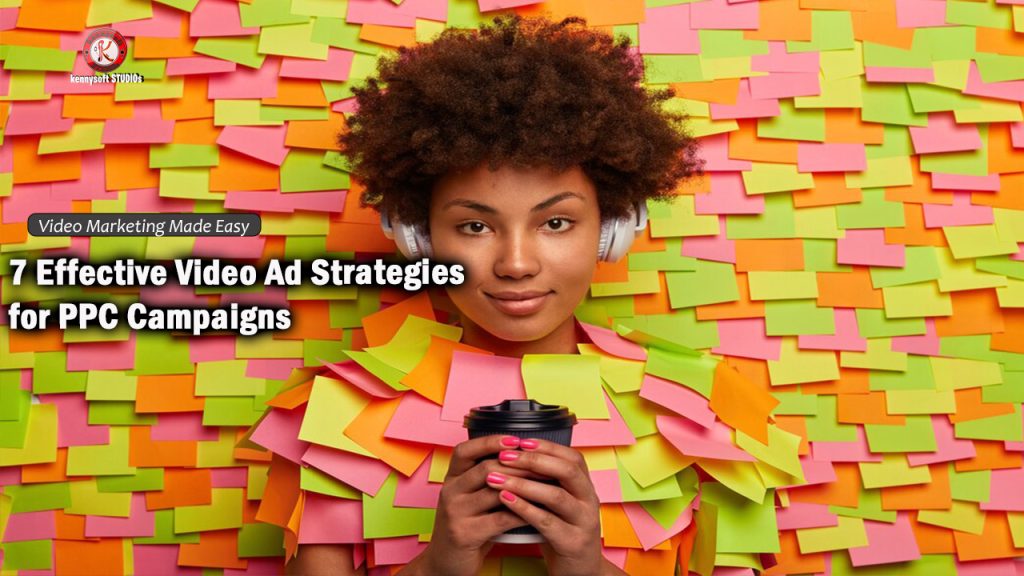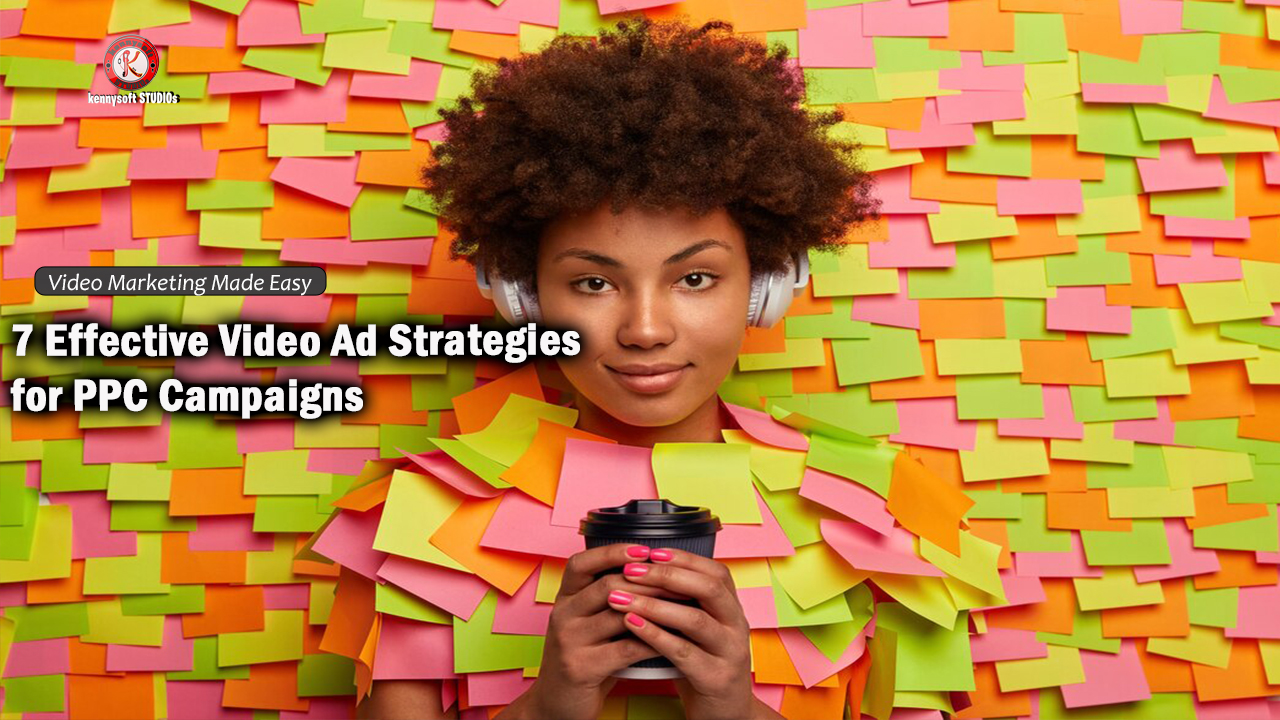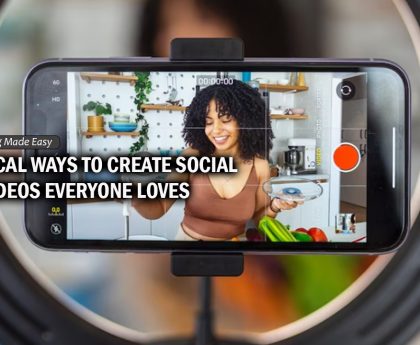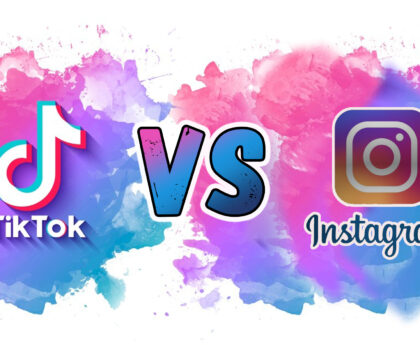
Video advertising has become a key element of successful Pay-Per-Click (PPC) campaigns, by capturing attention and delivering messages in a way static ads can’t. With platforms like YouTube, Facebook, and TikTok thriving on video content, leveraging video ads effectively in PPC campaigns is not just an option but a necessity.
As consumer attention shifts toward dynamic, engaging, and interactive content, businesses need to integrate video advertising into their pay-per-click (PPC) campaigns to stay competitive.
But not all video ads are created equal. For a video ad to deliver results—whether that’s brand awareness, lead generation, or direct sales—it requires a strategic approach.
- Understanding the Power of Video Ads in PPC
- Define Clear Objectives
- Prioritize Audience Insights
- Hook Viewers Immediately
- Optimize for Mobile Viewing and Focus on Quality Production
- Use Strong Calls-to-Action (CTAs)
- Leverage Platform-Specific Features
- Use Captions and Visual Cues
- Best Practices for Video Ads in PPC Campaigns
- Conclusion
Understanding the Power of Video Ads in PPC
Video content is the most engaging form of media online. Research shows that:
- Videos increase retention rates by 95% compared to text-based ads.
- PPC campaigns with video ads see an average CTR increase of 27%.
- Platforms like YouTube and TikTok have become top choices for advertisers due to their massive video-first user base.
By combining the visual appeal of video with the precision targeting of PPC, businesses can effectively capture attention and encourage action.
But what makes a video ad truly impactful? Below are some strategies which can be used to create video ads that deliver exceptional results.
Define Clear Objectives
Before creating your video ad, outline what you aim to achieve. Is it:
- Brand Awareness? Focus on storytelling and memorable visuals.
- Lead Generation? Include a compelling call-to-action (CTA).
- Conversions? Showcase your product’s benefits and a clear next step.
Your objective shapes the tone, length, and messaging of your ad.
Prioritize Audience Insights
Understanding your audience’s preferences is fundamental. Use platform tools like Google Ads Audience Insights or Meta Audience Manager to uncover:
- Age and gender demographics.
- Behavioral patterns.
- Interests and pain points.
- Technical Considerations which include Preferred platforms, Device usage and Content consumption habits.
Tailor your content accordingly. For instance, a professional service targeting LinkedIn users might focus on polished, informative content, while a fashion brand on Instagram may opt for vibrant, lifestyle-focused storytelling.
Hook Viewers Immediately
The first few seconds of your video are critical. Research shows that attention spans are short, especially online. Use a compelling hook such as a bold statement, a striking visual, or a provocative question to grab attention immediately.
For example: “Did you know 70% of online shoppers prefer video over text ads?”
Optimize for Mobile Viewing and Focus on Quality Production
Over 75% of video views come from mobile devices. High-quality visuals and sound are non-negotiable. Ensure your ad features:
- Uses vertical or square formats for better viewing.
- Features bold text and clear visuals, as audio is often muted by default.
- Crisp, clear visuals.
- Professional sound design.
- Engaging editing with smooth transitions and pacing.
Use Strong Calls-to-Action (CTAs)
Your ad should guide the viewer to the next step. Use CTAs like:
- “Learn More” for educational campaigns.
- “Shop Now” for e-commerce.
- “Sign Up Today” for lead generation.
Place the CTA prominently, either at the end of the video or throughout, depending on the platform.
Leverage Platform-Specific Features
Each advertising platform has unique features that enhance video ad performance:
- YouTube Ads: Use bumper ads for short messages or TrueView ads for longer content with user control.
- Facebook & Instagram: Take advantage of Stories ads and carousel videos.
- TikTok: Incorporate trending sounds and hashtags to boost visibility.
Use Captions and Visual Cues
Since many viewers watch videos without sound, incorporate:
- Subtitles or captions to convey your message.
- On-screen text and graphics for emphasis.
- Clear CTAs in visual form, such as buttons or banners.
This ensures accessibility and higher engagement rates.
Best Practices for Video Ads in PPC Campaigns
- Storytelling Matters: Focus on narratives that evoke emotions and resonate with your audience.
- Test Multiple Formats: A/B test different ad styles, lengths, and CTAs to determine what performs best.
- Align with Brand Identity: Ensure your videos reflect your brand’s tone, style, and message.
- Use Remarketing Wisely: Create personalized ads based on user actions, such as cart abandonment or previous engagement.
Conclusion
Video advertising has transformed from a novel marketing approach to a critical component of successful digital marketing strategies. Effective video ads in PPC campaigns require a blend of creativity, strategy, and adaptability. Whether you’re a small business owner or a marketing expert, incorporating these strategies will elevate your campaigns, improve ROI, and help you stand out in the crowded digital space.
Effective video ads have the power to transform PPC campaigns. By focusing on audience insights, optimizing for platform requirements, and delivering high-quality, engaging content, businesses can harness the full potential of video marketing.
Remember, by understanding your audience, setting clear goals, and continuously optimizing your approach, you can create ads that not only captivate but also convert.






